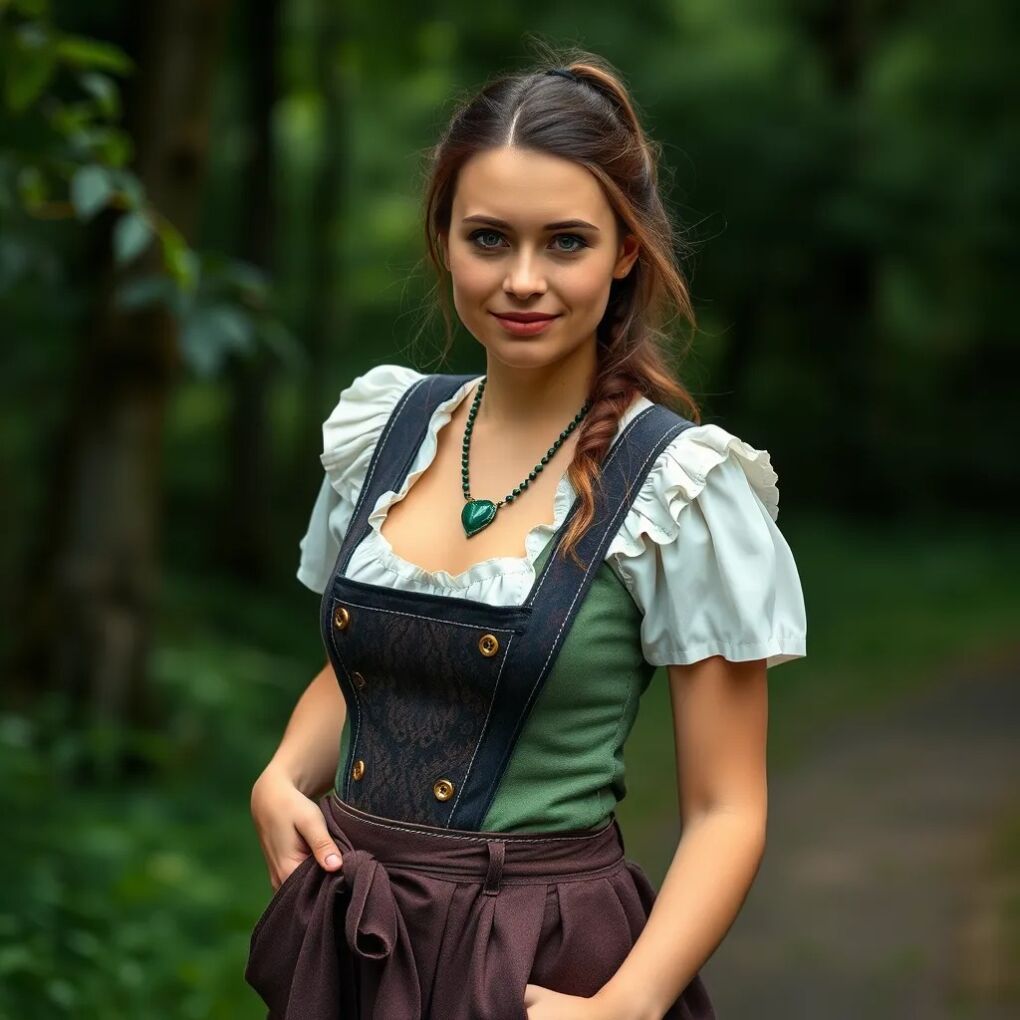Sustainable fashion is an emerging phenomenon that reduces environmental impact. Centuries-old traditional clothing like dirndls and lederhosen is also contributing to eco-friendly efforts. These Bavarian outfits are being manufactured to align with principles of sustainability without losing their cultural blueprints.
This shift combines tradition with innovation, creating outfits that celebrate history while embracing environmentally friendly practices. From choosing natural materials to exploring reusing and rental options, sustainable dirndls and lederhosen are leading the way in merging timeless fashion with modern responsibility.

How Sustainability is Impacting Traditional Bavarian Wear?
Sustainability impacts traditional costumes in many ways, including materialization and sourcing.
Low Impact Materialization of Dirndls & Lederhosen
One of the aspects of sustainable fashion is the use of high-quality, natural materials. Dirndls and lederhosen are already made from fabrics like linen, wool, cotton, and leather, all of which are;
- Durable
- Biodegradable
- Environmentally friendly
These functional attire choices were made so this outfit could last a long time. Unknowingly, this may prove to be a significant milestone towards sustainability. Some of the recycled fabrics used in making dirndl and lederhosen are discussed below;
1. Recycled Polyester (rPET)
This material is made from post-consumer plastic bottles and other polyester waste. It is made by cleaning, shredding, and melting the plastic to create new polyester fibers. Polyester is widely used in winter collections of dirndl skirts or bodices.
Benefits:
- Reduces plastic waste in landfills and oceans.
- It consumes less energy compared to producing virgin polyester.
- Offers durability and performance similar to virgin polyester.
2. Recycled Cotton
Recycled cotton is produced from used cotton outfits and industrial cotton scraps. It is also used to manufacture the dirndl dress. The collected cotton is sorted, cleaned, and processed into new fibers, often blended with other materials to improve strength.
Benefits:
- Conserves water and reduces pesticide use compared to growing new cotton.
- Decreases textile waste in landfills.
- Provides softness and comfort similar to virgin cotton.
3. Recycled Wool
Recycled wool, also known as reclaimed or shoddy, comes from discarded clothes and industrial wool waste. The wool is cleaned, sorted by color, and processed into new fibers to make a winter dirndl outfit.
Benefits:
- Lowers the environmental impact of sheep farming.
- Uses less energy and resources than virgin wool production.
- Biodegradable, renewable, and retains warmth and softness.
4. Recycled Silk
Recycled silk is derived from discarded silk and industrial silk waste. The material is cleaned, unraveled, and spun into new fibers to create luxurious formal dirndl dresses.
Benefits:
- Decreases waste from silk products.
- Conserves resources used in silk farming.
- Soft and lustrous like virgin silk.
5. Recycled Leather
Recycled leather is made from used leather goods and industrial leather scraps. The leather is cleaned, shredded, and reconstituted into new Haferl shoes, suspenders, and even Lederhosen.
Benefits:
- Reduces waste from discarded leather products.
- Saves resources used in traditional leather production.
- Durable and versatile, comparable to virgin leather.
The Sustainable Sourcing of Traditional Outfits
Buying a new dirndl and lederhosen for every iteration of Oktoberfest can increase industrial waste, such as CO2, and impact the environment. Other options have been introduced in the traditional fashion industry to allow people to wear different attires to the festival.
Renting a Traditional Attire
The renting industry is growing exponentially due to its major impact directly on sustainability. Many physical and online stores have emerged to grab dirndl and lederhosen for a day to week. The cost of the rental is also very low compared to getting brand-new attire.
Thrifting Traditional Wear
Many thrift stores have also been established across the USA and other countries, which promote slow fashion. Following strict policies, traditional attire is inspected for flaws.
Ethical Manufacturing of Traditional Wear
Traditional attire has been hand-made for a long time. The German specialized tailors famous for making hand-made lederhosen and dirndl carry out the whole process in their workshop, dedicatedly making every piece. The fast fashion industry relies heavily on heavy machinery to make the dresses, which results in chemical waste.
The traditional clothing industry still follows centuries-old methods and is far more conscious of the environment. The process is not only simple but also more ethical.
Challenges Posed on Sustainable Traditional Wear
There are many hurdles in the way of sustainable traditional clothing, especially for lederhosen. The men wear Bavarian outfits made from animal-source leather, which seems a questionable choice, threatening the extinction of the deer (a major source for making lederhosen).
However, with accessibility for everyone, more materials like denim lederhosen are being introduced. This may raise a question about the authenticity of the outfits, and it is especially opposed by the trachten preservation societies.
Wrapping It Up!
Traditional Bavarian clothing has existed for more than three hundred years. Sustainable fashion, which is relatively new, has also impacted dirndls and lederhosen. These outfits have already been made in a way that is less harmful to the environment on many levels.
The use of recycled materials like linen, cotton, and even leather, along with the ethical ways to reuse these clothes, is implemented in the industry. Even the handmade manufacturing of these outfits is way more sustainable than non-traditional outfits.
